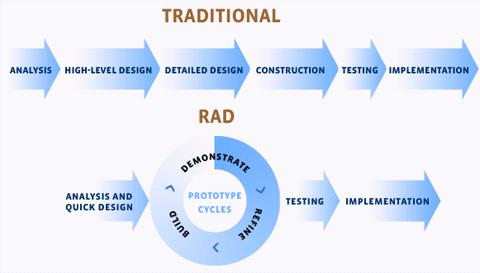RAD methodology was developed to deliver systems very fast.
The RAD approach is not appropriate to all projects
Project scope, size and circumstances all determine the success of a RAD approach.
PROJECT SCOPE
Focused scope where the business objectives are well defined and narrow.
PROJECT DATA
Data for the project already exists (completely or in part).
The project largely comprises analysis or reporting of the data.
PROJECT DECISIONS
Decisions can be made by a small number of people who are available.
PROJECT TEAM
The project team is small (preferably six people or less).
PROJECT TECHNICAL ARCHITECTURE
The technical architecture is defined and clear and the key technology components are in place and tested.
PROJECT TECHNICAL REQUIREMENTS
Technical requirements (response times, throughput, database sizes, etc.) are reasonable and well within the capabilities of the technology being used.
Rapid means Fast
The RAD method has a task list and a work breakdown structure that is designed for speed. However the major difference in RAD is a set of management techniques that are optimized for speed. Among the most important are:
- Prototyping - an approach based on creating a demonstrable result as early as possible and refining that result. The refinement is based on feedback from the business, the eventual users of the system.
- Iteration - is a commitment to incremental development based on refinement. Prototyping and iteration go hand in hand.
- Timeboxing - is a management technique that focuses attention on delivery above all else. Under a timebox scope can change but delivery cannot.
 ශිල්ප 64
ශිල්ප 64